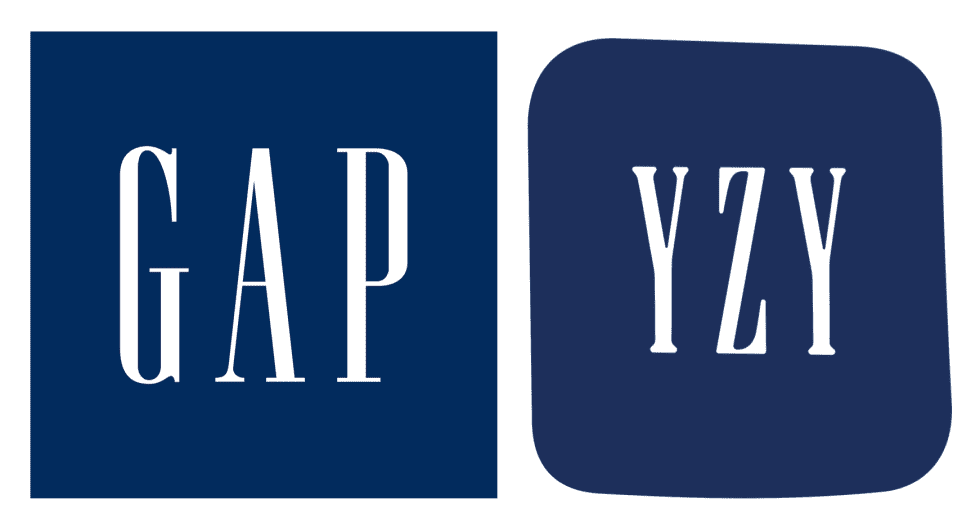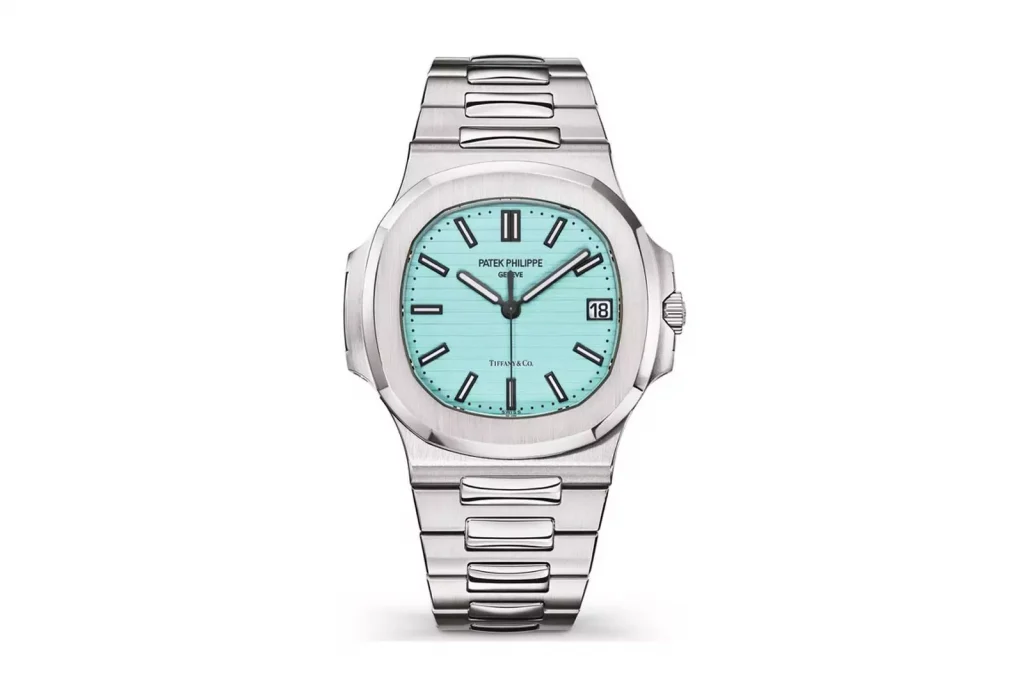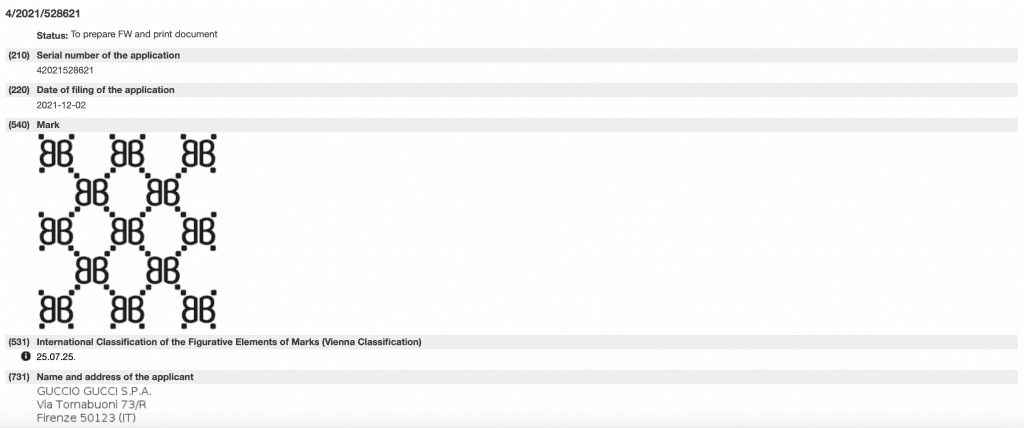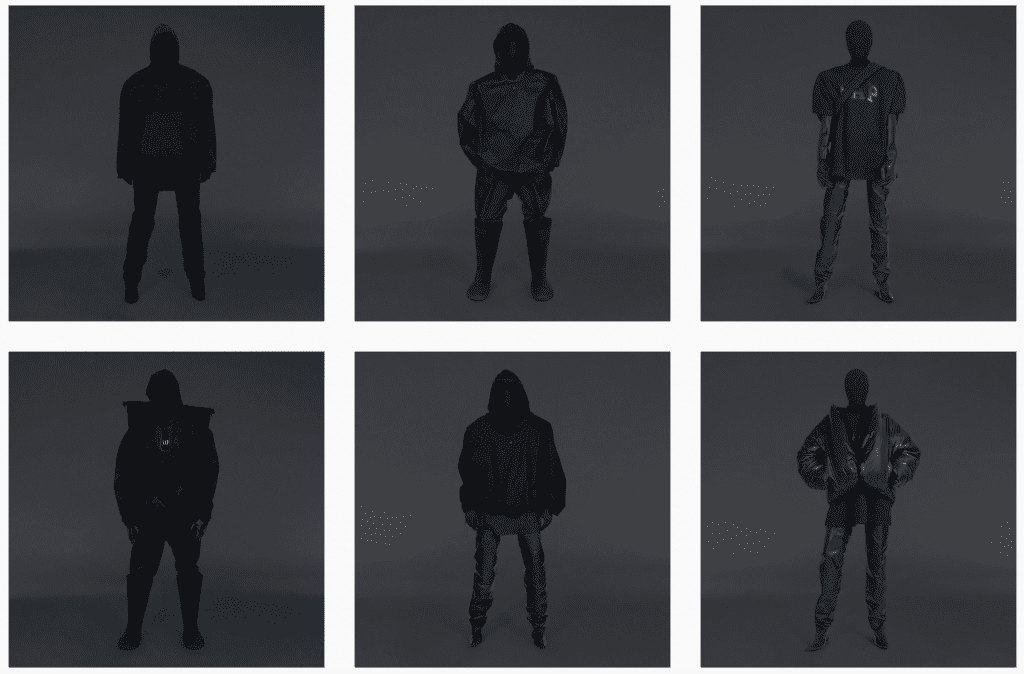The mashup of Gap’s signature navy blue hue with Yeezy LLC’s “YZY” mark that was rolled out in April ahead of the debut of the two brands’ heavily-hyped Yeezy Gap collection is facing pushback from the U.S. Patent and Trademark Office (“USPTO”). On the heels of Kanye West and Gap each filing trademark applications for registration for the mark, which consists of “the letters YZY in white inside of a blue square with rounded edges,” the USPTO has issued preliminary refusals, pointing to a previously issued registration for YZY for use on similar goods/services, as well as a pending trademark application for registration for an unaffiliated YZY mark that could stand in the way of Yeezy Gap registrations.
In separate but nearly identical Office actions this month, USPTO examining attorney Rebecca Caysido took issue with the Yeezy Gap logo marks, which Gap and Kanye West’s intellectual property holding company Mascotte Holdings filed on an intent-to-use basis for clothing, bags, and “retail and online store services in the field of clothing, footwear, headwear, accessories, [and] bags” in April. According to Caysido, the stylized YZY marks are too similar to an already-existing registration for YZY for use on footwear (no. 5227726) to move ahead in the registration process, as the Trademark Act bars registration of an applied-for mark that is “so similar to a registered mark that it is likely consumers would be confused, mistaken, or deceived as to the commercial source of the goods of the parties.”
Potential good news here for Kanye and Gap is that the conflict between their new stylized YZY marks and the “confusingly similar” YZY mark that is standing in the way of new registrations may be short lived, as the existing registration that Caysido mentions was issued to Mascotte. Counsel for Yeezy may be able to argue that consumers will not be confused about the source of the goods bearing West’s YZY mark and those with a Yeezy Gap mark, as Yeezy Gap goods are, in fact, associated with/tied to Kanye’s Yeezy brand.
It is not immediately clear how Yeezy and/or Gap would fare in making such an argument. After all, the goods bearing the stylized Yeezy Gap mark are affiliated with Yeezy, which one half of the collaborative union. However, the goods are also affiliated with Gap, potentially giving rise to an issue when it comes to the notion of a “single” source.

The second ground for preliminary refusal from the USPTO centers on a scuffle that has been underway between West’s Yeezy (via Mascotte Holdings) and an unrelated company that filed a trademark application for registration for a stylized version of its name – Y.Z.Y. – for use on “fragrances and hair care preparations.” In response to the application that Miami-based fragrance company Y.Z.Y., Inc. filed in June 2018, the USPTO pushed back, asserting that its trademark is too similar to an existing YZY mark that Mascotte had registered a year prior for use on footwear (no. 5227726), and would likely confuse consumers as a result.
Following a couple of unsuccessful attempts to convince the USPTO that consumers are not likely to confused, including by arguing that West’s brand does not sell fragrance products, Y.Z.Y., Inc. initiated a new fight before the USPTO’s Trademark Trial and Appeal Board, where it is seeking to cancel West’s “YZY” registration. Those cancellation proceedings were put – and remain on – hold in August 2021, and will resume once the USPTO determines whether to register Y.Z.Y., Inc.’s trademark.
The outcome of Gap and Mascotte’s trademark applications now hinges to some extent on the registrability of Y.Z.Y., Inc.’s trademark, with Caysido stating in the respective Office actions that because Y.Z.Y., Inc.’s application for registration predates the applications for the stylized Yeezy Gap mark, if Y.Z.Y., Inc.’s mark is registered, Gap and Mascotte’s mark “may be refused registration … because of a likelihood of confusion between the two marks.” As a result, after the USPTO receives Gap and Mascotte’s responses to the recently-issued Office action, Caysido assert that the USPTO may opt to put the registration process on hold “pending final disposition of the [Y.Z.Y., Inc.] application.”
Yeezy Gap & the Rise of Co-Branding
Looking beyond the procedural elements at play, the Yeezy Gap mark, itself, and the larger rise of co-branded collaborations is worthy of attention. While fashion collaborations are not new by any means, what is proving to be somewhat novel is the willingness of brands to mashup their logos to develop new assets and create buzz that breaks through the noise of the market.
The commingling of trademarks (and in certain instances, copyrights, too) goes beyond Yeezy Gap, and has been seen in tie-ups between Coach and Champion, Sacai and APC, Kering-owned brands Gucci and Balenciaga, rivals-turned-collaborators Versace and Fendi, and longtime partners Tiffany & Co. and Patek Philippe, the latter of which debuted a limited edition watch this week with Tiffany’s name and famous blue inserted onto the source-identifying face of Patek’s Nautilus watch. (Such efforts for go back further, with Tiffany and Patek working together in a collaborative capacity for some 170 years, and Supreme and Louis Vuitton teaming up for a headline-making collab several years ago, and tweaking Vuitton’s Toile Monogram to include Supreme’s logo.)

This enduring trend is intriguing from a branding perspective, as high fashion and luxury brands have traditionally been hesitant to play with their trademarks too much (or at all). Rebrands – and presumably, co-brands – can be risky (although, as Rowan Forster argues here, trademarks are much more flexible than we tend to give them credit for) when companies have spent significant time and resources to establish strong branding and corresponding goodwill that resonates with consumers, and thus, is synonymous with their products, ethos, and business operations as a whole. Nonetheless, it seems that brands are proving increasingly willing to take a more fluid approach to their branding when it comes to collaborations, as they aim to inject a sense of novelty largely by way of the branding at play.
As TFL has previously noted, this willingness is likely due, at least in part, to the fact that branded collaborations have become relatively run of the mill and almost expected at this point, and thus, it takes more to excite branding-happy consumers. These more fluid uses of trademarks as part of heavily-hyped collaborative efforts between similarly-situated brands is still relatively unexpected, and allow companies to position themselves to benefit from a more viral effect than the traditional uses of their marks may achieve.
The trademark applications that brands are filing in connection with these jointly created marks, and the potential for co-ownership status are proving to be interested side effects.
On the heels of Gap and Mascotte respectively filing to register the blue-and-white YZY mark, and thereby, indicating joint ownership of the asset (but arguably also somewhat distinct ownership given the separate filings), Balenciaga and Gucci filed trademark applications for registration for one of their collaborative marks, with the companies separately being named in trademark applications for the “Hacker” collection pattern that was created by swapping in “BB” for Gucci’s well-known “GG” monogram. Meanwhile, German trademark firm Minerva Gmbh filed two trademark applications for registration for the “Fendace” word mark for use on apparel, leather goods, and eyewear, presumably on behalf of Fendi and Versace individually or a specific venture between them.

The joint filing/ownership approach of these new assets by the likes of Gap and Yeezy, as well as Gucci and Balenciaga is intriguing, especially because joint ownership has been argued to “compromise the trademark’s fundamental source-identifying nature.” I wonder if companies like Yeezy and Gap, for instance – as distinct from Gucci and Balenciaga, which share a parent company (and thus, would potentially be viewed favorably under the tenets of the Wella A.G. case) – will face additional issues down the road given that they are, in fact, two different entities, and thus, two separate sources even if the collaborative wears arguably come from a new, single source.
As we asserted earlier this year on the heels of the Gucci x Balenciaga co-branding venture, now appears to be an opportune time for companies to assess the breadth of the assets in their portfolio and try to monetize their brands in ways that go beyond their current uses. This is clearly taking the form of co-branded collabs. In this same vein, companies are bringing their branding into a new realm entirely by way of the metaverse and various gaming-centric scenarios, where many brands have not been present in the past.
Both avenues are readily bringing licensing deals – or maybe more likely for control-happy luxury goods names, joint ventures – that make use of the assets of companies’ core brands in connection with new products/services and/or new geographic markets, or otherwise unexpected partnerships between brands, into the fold. And as we have predicted, these efforts are expected to continue (at least until consumers begin to exhibit co-branding and/or gaming fatigue) as companies emerge from lengthy COVID lockdowns and sales slumps, and aim to remain relevant in light of shifting consumer expectations and priorities.











